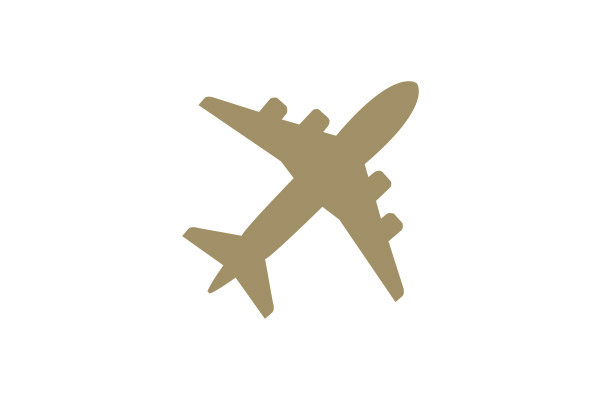Spreading to more than 100 countries, the COVID-19 outbreak is causing disruption on an unprecedented scale. Governments worldwide have instructed national lockdowns – and with airlines unable to fly, aviation is one of the industries being hit hardest by this global crisis.
WHAT IS COVID-19?
COVID-19 is a new strain of coronavirus – a large family of viruses that includes illnesses like the common cold, as well as more severe diseases such as MERS and SARS. Coronaviruses generally originate in animals before making the leap to people. COVID-19 had never been identified in humans prior to the first reported case in 2019, in Wuhan, China.
The virus has since become a global pandemic. In the majority of cases, symptoms are mild. In the cases of those of advanced age or with underlying health conditions, the disease has resulted in an increasing number of casualties across the globe.
WHAT IS BEING DONE TO CONTROL ITS SPREAD?
Public health and wellbeing remains the priority and, in addition to more stringent preventative hygiene measures, governments and industry authorities have taken various actions to attempt to control the spread of COVID-19:
- Heightened immigration regulations
- Cancellation of flights to and from infected countries
- Nationwide lockdowns and restrictions on movement and gatherings
These safeguards have affected companies across a broad range of industries, with the resulting loss in demand for services forcing them to limit their operations or suspend them altogether.
With the future increasingly difficult to predict, many employees are finding themselves having to sacrifice salary, take unpaid leave or being made redundant, as companies cut overheads to improve their chances of survival.
HOW HAS THE COVID-19 OUTBREAK AFFECTED THE AVIATION INDUSTRY?
The disruption caused by the spread of the disease is unprecedented. The resulting restrictions on movement have had a devastating impact on the aviation industry. Global air travel demand has collapsed and scheduled operators have been left with little choice but to ground their fleets.
In addition to the significant loss of revenue – estimated to reach up to $314 billion for global passenger airlines – the lack of operation means airlines stand to lose their airport slots across their European route networks, a rule that has since been suspended by the EU until the end of the summer season.
Airlines with significant cash reserves may well be capable of weathering this storm. Without government intervention, however, smaller airlines and ACMI operators who rely on revenue generated during the summer travel peak will almost certainly suffer, with current indications suggesting we would be incredibly lucky to see travel restrictions lifted by the tail end of the summer season.
The absence of scheduled operations has had knock-on effects, with the ACMI leasing market all but vanishing. The cargo sector, which relied largely on utilising scheduled carriers’ belly hold capacity, is scrambling to transport goods at a time when the movement of essential items (such as personal protective equipment, medical supplies and food items) is more important than ever.
Lessors are also finding themselves in a difficult position, with the client demand for rent deferrals and flexible arrangements skyrocketing. They’re left with a tough choice; renegotiate and shoulder the risk that their clients may go bankrupt, or take aircraft out with little likelihood of finding a buyer.
The outbreak’s impact is also affecting OEMs’ order books, with airlines asking to defer deliveries and a number of airlines and leasing companies cancelling orders of the beleaguered Boeing 737 MAX.
In terms of the private aviation market, the outbreak has caused a surge in demand for private jet charters, as scheduled route networks have all but ceased. Those with the means look to fly home via less conventional routes, in an attempt to outmanoeuvre the virus by avoiding outbreak hotspots.
Borders and airports are closing, making travel by air far more difficult – but some countries remain open, offering unusual routes home for some.
This surge in demand still doesn’t have the volume to keep the industry afloat. But there’s scope to use private jets to ferry urgent medical equipment, exactly where it’s needed and fast.
HOW LONG WILL THE COVID-19 OUTBREAK LAST?
With different countries across the world experiencing varying stages of outbreak, and with a worldwide vaccine unlikely to be ready until the beginning of 2021, it’s impossible to predict when things will begin to return to normal.
Even once the outbreak is contained, the global economic aftermath is likely to be felt for a long time to come – and the business landscape will undoubtedly be changed as a result.
WHAT WILL THE LONG-TERM EFFECTS BE ON AVIATION?
Flybe was the first airline to fall as a result of the global crisis – although the regional operator was struggling financially long before the outbreak took hold.
COVID-19’s impact on the aviation industry has been catastrophic. Aviation will return to form eventually. Long-term, this is a blip – albeit a very large one. With all scheduled operations ceased and even major airlines struggling to stem their losses, there will undoubtedly be further airline casualties.
Once the world has recovered from COVID-19, the aviation landscape will look very different. Many of the big names we’ve come to know over the decades will no longer be there. It’s difficult to talk about opportunity in times like these, when people are losing livelihoods – but the future will brighten once again.
Working together, collaborating and finding reasonable ways forward, the industry will be able to come out on the other side – and thrive once again.




